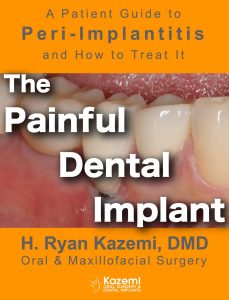Why extract a dental implant? While dental implants are highly successful and predictable for replacement of missing teeth, there are circumstances where dental implant complications may necessitate their removal. Extraction of failing dental implants, known as explantation, requires special techniques and instruments. Previously, the only way to remove a failing dental implant was to cut it from the supporting bone using trough burs essentially. This approach was not only difficult, but also quite traumatic resulting in significant loss of bone during its removal. The current recommended method for implant removal is the use of a unique reverse torque instrument. The technique involves placement of a special tool inside the implant and a high reverse torque force to break its contact with the bone. With adequate force, the implant is disintegrated from the bone and removed. Technique is completely atraumatic as it requires no incision and no removal of surrounding bone. The post-operative recovery is fast with little or no pain.
The most common indications for explantation are:
- Chronically infected dental implant (peri-implantitis)
- Painful dental implant that does not respond to local cleaning (peri-implantitis)
- Implant with significant loss of attachment
- Poorly positioned implants that can not be easily restored
- Fractured dental implants
- Implants with broken screws that can not be retrieved
The video below demonstrates the technique for implant explantation which can be done in as little as 5 minutes:
